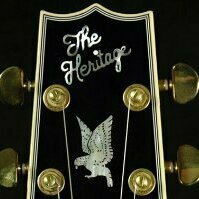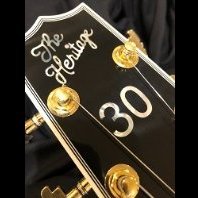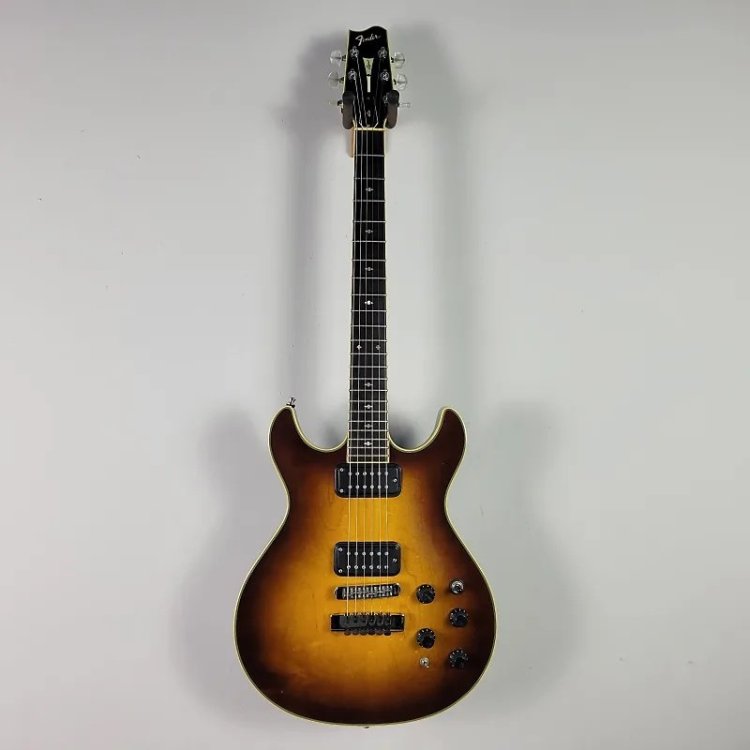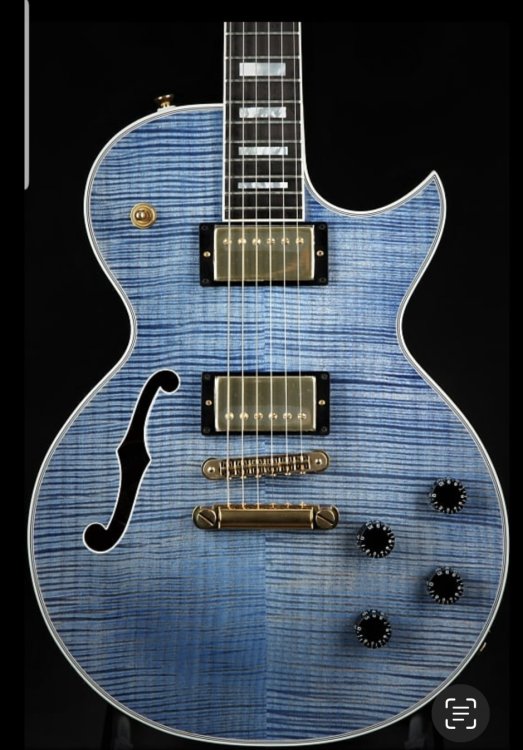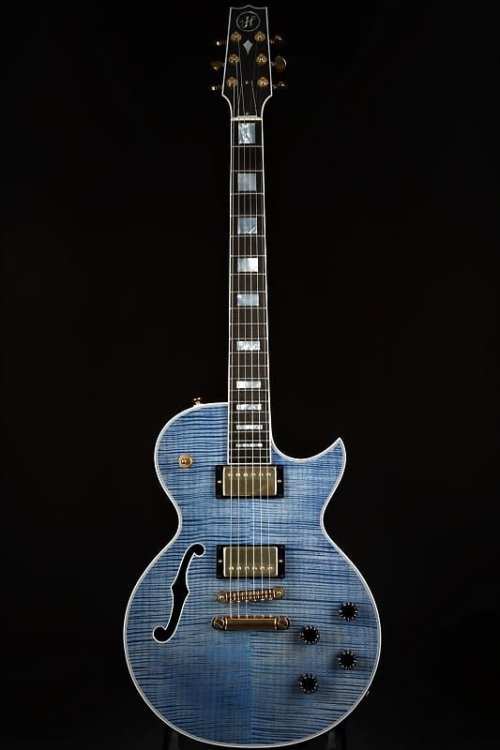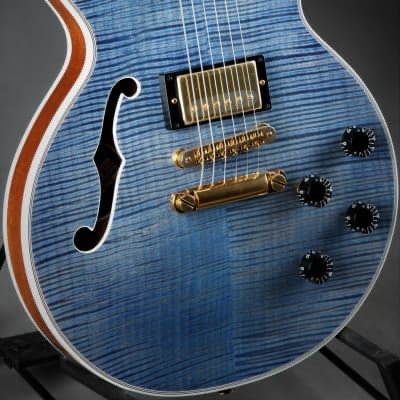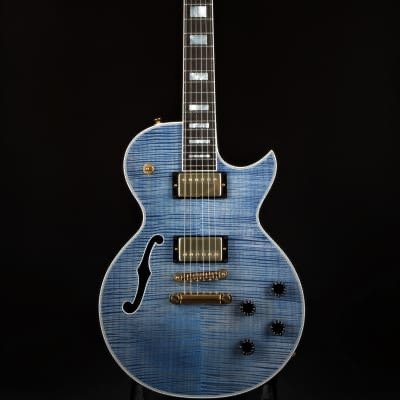All Activity
- Past hour
-

Dallas International Guitar Show Surprise
hinesarchtop replied to SeattleMI's topic in Heritage Guitars
Well, only a "pro" knows how to utilize the florentine cutaway to access the notes above the 14th fret sir. I'm still working on frets 1 through seven. -

Dallas International Guitar Show Surprise
hinesarchtop replied to SeattleMI's topic in Heritage Guitars
2017? -

Dallas International Guitar Show Surprise
hinesarchtop replied to SeattleMI's topic in Heritage Guitars
I'm curious which year your guitar was manufactured. That wood looks very familiar. -
Your guitar is beautiful. I had the pleasure of talking to Pete after a tour of the factory years ago. He is a true gentleman and an asset for Heritage guitars.
-

Electrical and magnetic measurements of my HRW pickups
hinesarchtop replied to nuke's topic in Heritage Guitars
Nice to know. I finally picked up an LCR meter so I can measure more values. No ones ever divulged the guarded secret if the HRW as far as I know. Thanks for the info! - Today
-
Actually there was an unknown corruption through software that took out pics with similar names in and of itself. No real answer to the problem beyond speculating what could have happened. Wasn't intentional
-

Electrical and magnetic measurements of my HRW pickups
zydecosoultrain replied to nuke's topic in Heritage Guitars
Thanks Nuke. That is really interesting. Like your friend, I have a H535 with an Sh-2 in the neck and a JB in the bridge. I also have a H575 with HRWs which I think of as fairly hot compared to the H535. Certainly the H535 makes a lot more background hiss through the amp but that may be due to other electrical issues I guess. I'll try to clean up the input jack on the H575 and carefully compare the neck pickup sound on each guitar. -
Yeah, that's the best part of the Schaller STM bridge, the string spacing is very adjustable. They're not all that heavy either. The STM bridge weighs 58 grams, the top-loader tailpiece weighs 126 grams. Yeah, I started playing as a kid around 79. That's the era of brass-everything, including "Fat Heads" , brass plates to put on the back of headstocks, "for sustain!" The STM bridges have a common, but easily fixed problem. Over the years, the threaded shaft of the rollers works loose from the forks that hold it to the intonation screws. If you can pinch the roller bead and pull it out of the bridge, they're loose and that, is the "tone sucking" problem. The easy fix is a tiny dot of red Loctite in the little forks that hold the threaded shafts. Requires careful work under a magnifying glass and just a tiny dot of loctite on the end of a toothpick is plenty. You don't want it on the threads or anywhere else. Then just press them back in carefully centered, and let the Loctite cure. Some Loctite activator will help, since chrome is inactive metal. Don't bend the forks to tighten them. They were peened originally, but the metal is cast zinc and will crack easily. Once the Loctite cures, they're good as new and sound good again.
-
I recently acquired a 2001 H535 with the HRW pickups in it. I was around then the HRW was introduced and it was the bee's knees, and nowdays not so much. I have test equipment, and I can actually measure and compare the magnetic properties and electrical properties of pickups, plot their overall response curves and characterize them objectively. The coil resistance really doesn't tell us anything about the pickup's performance. It has very little to do with the sound they make. Wht is important is the inductance and the loaded resonant frequency of the pickup. After comparing the properties I measured of the HRW's I have with many other pickups, I will say they are very close to the Seymour Duncan SH-2 Jazz pickup set. The inductance and capacitance of the coils, the magnetic field strengths and resonant frequency are very close, right around 5% within the same measurements. The magnet fields are a bit stronger on the HRW, but not all that much. Within the range of normal variance for pickups. The other part of the HRW package is the potentiometer values, the HRW's use 500k volume and 250k tone pots, with the same .022 capacitors that Heritage normally used. My friend has a 335 with a SH-2 Jazz neck and SH-4 (JB) bridge pickup, and the Jazz and HRW neck is quite similar sounding and output is right in the ballpark.
-
I was, on one of my telecasters I used a heavy brass bridge plate and brass nut. They were made by mighty mite. And my L5 S Guitars got those big harmonica bridges, weren’t they made by Schaller?
-
Was anyone around during the " heavier weight! All brass hardware! " era of guitars, during the 70's? That's when I always imagined those heavy tailpieces being germinated The roller saddles are super adjustable too, easy to dial in exact string spacing.
-
Question for administrators. I assume the photos lost in the Gallery section is because it was taking up too much space? Thank You.
-
MartyGrass started following Dallas International Guitar Show Surprise
-

Dallas International Guitar Show Surprise
MartyGrass replied to SeattleMI's topic in Heritage Guitars
Beautiful guitar. Calling it the "Pro" model is weird. I had a few Millennium Eagle 2000s and Ultras. Those aren't professional grade? When will have the Golden Eagle Pro? -
My Final 150 Artisian Aged Custom Core Mod/Improvement
Kuz replied to Kuz's topic in Heritage Guitars
Yes, that is exactly how it works on the Custom Core models. But there is no drilling for the standard 150s conversions to Faber bridge post either.... -
My Final 150 Artisian Aged Custom Core Mod/Improvement
hopkinwfg replied to Kuz's topic in Heritage Guitars
@Kuz thanks.... but i was wondering dosent your H150 custom core has that two pole screw piece that drills into the body ? Just like those Gibson Rs ? So you just swap the original bridge which came stock on ya H150CC leaving that two direct mounted pole screw piece intact and added the fitting faber locking ABR bridge? -
My Final 150 Artisian Aged Custom Core Mod/Improvement
Kuz replied to Kuz's topic in Heritage Guitars
If you keep your tone knobs 100% open all the time, then the capacitors are not engaged and the caps values don't matter. So I wouldn't change caps if you don't use your tone knobs. If your tone knobs are all the way open, then you are only reliant on the tone pot value (500K usually, but early Heritages used 250K). -
My Final 150 Artisian Aged Custom Core Mod/Improvement
Kuz replied to Kuz's topic in Heritage Guitars
1) Just personal preference, but I would not put a Nashville bridge (locking or not) on a guitar when I could put an ABR bridge (my preference is a locking Faber ABR bridge). I prefer the ABR for ascetics and the functionally so I can lower the stoptail closer to the body. (Although, my favorite guitarist Larry Carlton I guess prefers a Nashville bridge..) 2) I do think the "locking" feature of both the Faber locking bridge and Faber locking stoptail does slightly increase sustain (due to the fact everything is locked down tight and no vibration from the body is lost on loose parts). Also, once the bridge and stoptail are locked down, you can remove the strings without having to worry about the bridge or stoptail moving or falling off the guitar. (Even my Gibson and Collings guitars that came from the factory with ABR-1 bridges, I have switched them out for the locking Faber ABR bridge and locking stoptail studs) 3) The Custom Core comes from the factory with an aluminum stoptail. If you have a heavy zinc or steel stoptail, I would highly recommend upgrading to an aluminum stoptail. The aluminum gives a clearer and more open sound. 3) Yes, Daniel (Rockabilly69) was responsibly for turning me on to exclusively using Faber locking ABR bridges and locking stoptail studs on all my tuneamatic/stoptail equiped guitars. 4) Daniel, I did all the work on your 535 P90. No drilling was needed from the the Nashville conversion to Faber. The Faber bridge post system comes with an easy way to remove the pot metal bridge plugs and you tap in the Faber steel bridge posts. -

My Final 150 Artisian Aged Custom Core Mod/Improvement
rockabilly69 replied to Kuz's topic in Heritage Guitars
no I just prefer the locker because it keeps the bridge on when your changing strings, same with their tailpiece -
My Final 150 Artisian Aged Custom Core Mod/Improvement
hopkinwfg replied to Kuz's topic in Heritage Guitars
Thank you !! I do some research... but do you think having a faber locking bridge be more superior than their faber non locking bridge ? Tone ? -
As I said I LOVE their tuners. So I'm not knocking them across the board, just saying that I'm not a fan of their hardware or pickups if I'm going after the classic old LP Kalamazoo sound. If people like their stuff, and they are getting the sound they want out of their guitars, that's all that really matters. This was opinion thread, and we all have them.
-
The question ( and this thread title ) "did Schaller do anything right" is a bit unfair and a very broad generalization, as obviously their stuff *is* well made, and solidly engineered.
-
Wow! Beautiful! I think they called the H-155's with that florentine cutaway the "Pro" model? Very cool you got to meet it's maker, too. Pete is the man!
-
Honestly, what pickup winder offers a low-moderate output conventional humbucker that isn't claimed to be a "PAF clone". 🤔 Schaller made an enormous number of pickups, and an enormous *variety* of pickups. There's not just one Schaller humbucker sound, there are a huge number of Schaller pickup variants, all made to order for different guitar manufacturers. Here's one of my favorites, a 1984 Fender Esprit Elite, part of the "Fender Master Series", the Esprit, Flame and D'Aquisto. Robben Ford played the Esprit, and Fender eventually re-launched it as the Robben Ford signature series. It's a really nice guitar, made in Japan and supervised by D'Aquisto. These were the first with Fender's "TBX" tone control system and intended as very high-end instruments. The pickups are Schaller, used on all three models. They are definitely on the mellow side, and have a unique mounting system with 3-point alignment, and the top of the pickup has a radius to match the strings. Of course, all the rest of the hardware probably looks familiar, tuners, bridge and fine-tune tailpiece are all Schaller. All of this still works great 40-years later. This unusual pickup system appears in Schaller's OEM literature in the mid-1970's. I'm not aware of another guitar maker who used it. They were not cheap, and quite innovative. I don't know what deal Heritage did with Schaller, or what they ordered or what spec's they asked for from Schaller. But they could have ordered whatever they wanted from them.
-
Dallas International Guitar Show Surprise
SeattleMI replied to SeattleMI's topic in Heritage Guitars
-
Different covers, different wind pattern,. different base plates, different wire, different magnet composition, and oh yeah, potted, close but no cigar. There are certain winders that put a little more emphasis on the proper PAF recipe. I don’t think Schaller is one of them!


